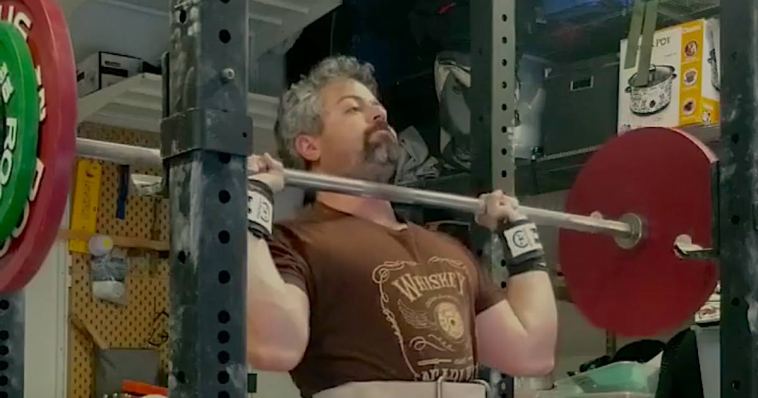- Like
- SHARE
- Digg
- Del
- Tumblr
- VKontakte
- Flattr
- Buffer
- Love This
- Save
- Odnoklassniki
- Meneame
- Blogger
- Amazon
- Yahoo Mail
- Gmail
- AOL
- Newsvine
- HackerNews
- Evernote
- MySpace
- Mail.ru
- Viadeo
- Line
- Comments
- Yummly
- SMS
- Viber
- Telegram
- JOIN
- Skype
- Facebook Messenger
- Kakao
- LiveJournal
- Yammer
- Edgar
- Fintel
- Mix
- Instapaper
- Copy Link
“I can’t wait for the gym to open so I can get off my computer and back to real coaching.”
If this is you, I can relate. This pandemic has been a massive nail in the road, blowing out the tire of our routines and forcing a detour from the route we’d mapped to a successful career.
Your makeshift online practice is like the donut you install to keep your car rolling long enough to fix it and get back on the road with a real tire. When your gym reopens, you might be thinking about putting that online practice back in the trunk, forgotten until needed again.
I invite you to reconsider. The best coaches will keep at least some of their practice online, not as a side hustle or a business gimmick, but because an effective online practice makes you a better coach.
The Facts Of Online Coaching
You’ve heard the big pitch elsewhere for making the switch to online or hybrid coaching:
- It allows flexible hours from anywhere in the world, be that your home, a coffee shop, or Fiji.
- With it, you can reach wider— even global— audiences, and with templates and smart systems in place, you can scale as big as your creativity and industry allow.
And everyone knows the costs:
- Remote work requires a different discipline to fight distraction.
- The primary advertising channels are overwhelmed with FitPros, most of them spouting nonsense, and broadcasting your signal through the noise is a full-time job.
- It’s harder to make a personal connection, to assess and correct movement in real-time, and coaching across states, provinces, and countries pose unique logistical challenges.
What you likely haven’t heard is how online coaching can improve your coaching skills on the platform, the field, and the gym.
I’ve been coaching online since 2016, programming, and providing video reviews of working sets for every lifter I train. As part of a team, we help each other with video reviews and collaborating on projects.
I’ve reviewed hundreds of lifters, thousands of workouts, over ten thousand videos, and these practices have improved my platform coaching skill in ways I never anticipated.
You’re Not a Wizard, Harry
In The Art of Thinking Clearly, Rolf Dobelli shares the impact of a banal truth: “Extreme performances are interspersed with less extreme ones.” In other words, when things are bad, or average, they get better. When things are great, or average, they get worse. This reality, called regression to the mean, deceives coaches every day in every set.
Every rep you observe lies on the lifter’s bell curve of performance. Some new lifters will have great reps by chance, and even masterful athletes occasionally slip in complex movements.
Over time, with proper coaching and focus, this curve shifts right and tight—the average improves, and performances become more consistent until true bungles become vanishingly rare.
When you coach movement in real-time, you see bad movement, cue it, and the next rep looks better. Pat yourself on the back—you fixed them. At least that’s how I felt after fixing people through seminars, workshops, CrossFit classes, and personal sessions. Online coaching broke me of this delusion.
I’m a pretty dense rock, so the lesson took time. I’d review a lifter’s video, see an error, and reach out to start typing only to have the error disappear in the third rep and never return.
Sometimes they’d set up incorrectly, and I’d try to reach through the screen to prevent the inevitable error that often never came. Perhaps they self-corrected. Perhaps it was random— a below-average rep for their bell curve— and the next rep was better simply by chance.
Online coaching taught me to watch for trends over single reps. To develop the lifter’s sense of themselves on the platform, then step out of the way. To leave them with an intention for the next session rather than a list of cues to implement long after their bodies forgot the feeling of their last lifts.
Most importantly, it taught me humility. In a class of 20 people, I could bark cues and fix errors like a manic poodle playing whack-a-mole, but the credit for change belonged to chance, time, and the lifter, not me.
The Screen Demands Results
The environment and friendships of the class and the energy and personality of a coach often define the small-gym experience. That experience is part of the value—for some lifters, the most important part— but when it predominates, accurate feedback on your performance gets clouded.
When I’d ask a client whether their training was working for them, the inevitable answer was almost always, yes. Unless the client knows their past and present performance, clearly defines their goals, and routinely considers the costs and benefits of training, they’re not ready to give me a clear answer.
I wanted to improve my coaching skills. But I was asking: “Do you still feel good about coming to the gym?”
Every coach has to get results to succeed. An informed client can find thousands of diets, programs, and forums to get form checks online for free. If we don’t demonstrate value and develop a personal connection, the client will leave.
Online, there’s no gym culture to hide behind. Every day is an opportunity for your client to log in, see their progress displayed onscreen, and decide if it’s worth the cost. That accountability refines coaching skills in a way that constant variance and high-energy classes can’t.
The Internet Never Forgets
Movement coaching, especially in multi-event sports like CrossFit, suffers from memory gaps. At the start of each session, we have two vivid recollections for the lifter’s movement—how we remember them when they first trained with us and how they’re moving right now.
Inevitably, they improve through the session as the result of the warmup, practice, and (hopefully) our coaching.
So by the end of the session, you can honestly tell the frustrated lifter, “I know it’s hard, but you’re getting better.” But are they? Do you remember the quality of their movement over the past several sessions, especially when they’re spaced over weeks?
Reviewing videos exposed my amnesia. One lifter felt stuck getting to their first pull up, and I went back and made a montage of their videos to show their real progress in an encouraging way.
Another lifter was frustrated with his power clean, but I knew he’d improved. His first video was certainly a mess, so I went digging for newer posts to show the chain of progress.
Unfortunately, he was right. His elbows hadn’t gotten any faster for weeks, and I was responsible for stepping up my game to provide tools and drills he could use to solve that problem.
Online video allows for concrete displays of progress that can overcome the doubt of almost any lifter as to whether they’re improving. It also starkly displays reality when the movement hasn’t changed.
I’ve started videoing my in-person lifters occasionally, building up a sample of videos of their movement over time, because that feedback—easy to collect on the web— just wasn’t available while coaching.
Same Road, Better Tires
In Oceanside, California, where I live, state and county officials are already reopening restaurants, public services, and fitness centers. Coaches will have to overcome the inevitable hiccups, but many of you are already starting to think of life post-shutdown.
The long wait is over—the mechanics have finally got the new tire installed—and you’re eager to get back on the road to helping people get stronger, fitter, happier.
You may have seen online coaching as a way to make ends meet and provide some continued value despite the loss. If that’s you, you may feel ready to toss the video conferencing, online coaching platforms, and email check-ins into your mental box of shutdown hassles in which, I’m just glad to be done.
Before you do, I invite you to consider this:
- As coaches, we learn best when we expose ourselves to different perspectives and challenges.
- Solving tough problems in unfamiliar ways not only demonstrates our coaching range, but it broadens our perspective, deepening our understanding of the strategies we’re already using.
Online coaching did that for me. So even though the interaction and community of coaching on the platform, teaching a live workshop, or leading a CrossFit class are at the heart of what I do, I’ll keep coaching online, pandemic or not, and I invite you to do the same. You might just become a better coach for it.


